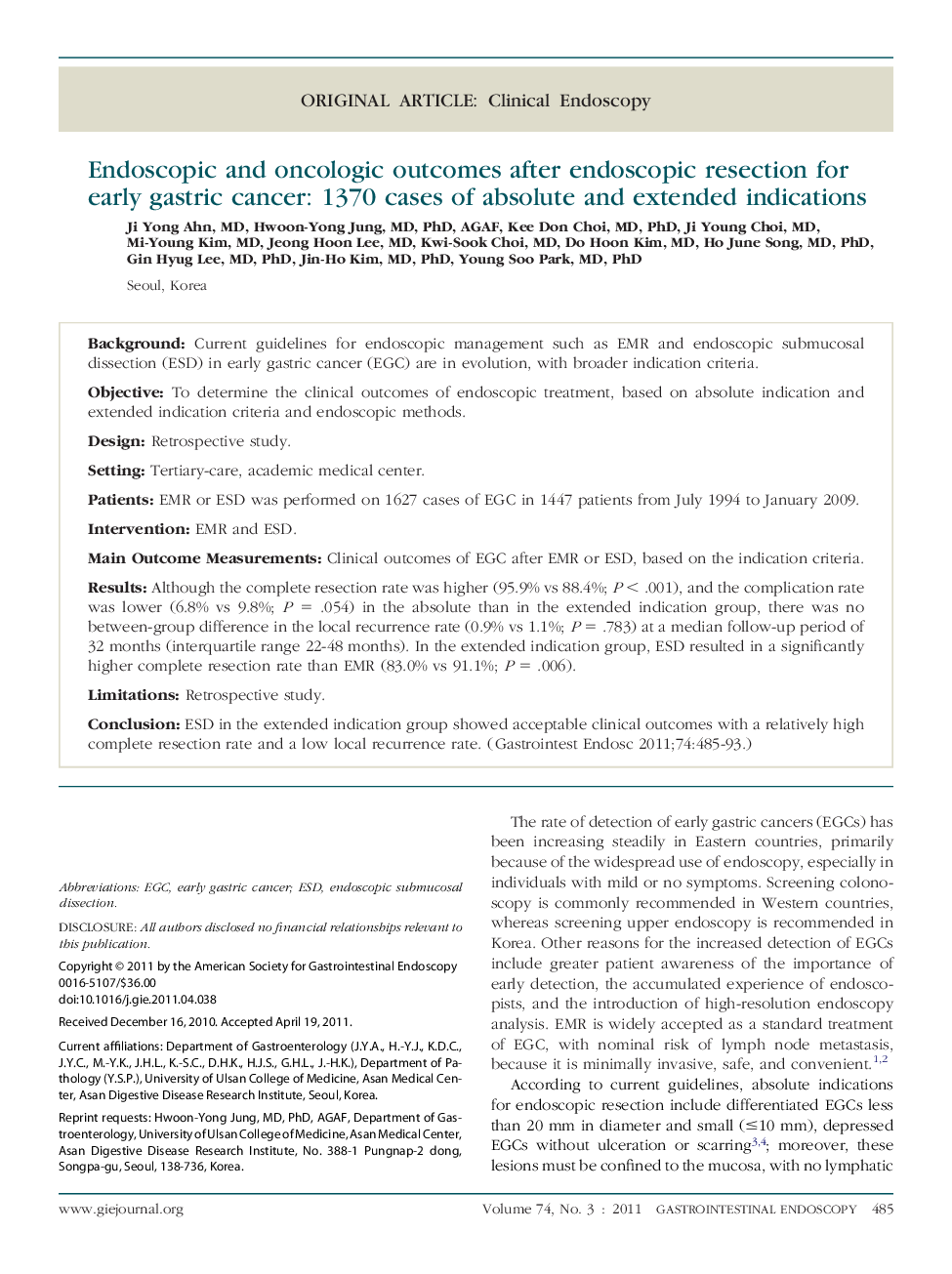| Article ID | Journal | Published Year | Pages | File Type |
|---|---|---|---|---|
| 3305820 | Gastrointestinal Endoscopy | 2011 | 9 Pages |
BackgroundCurrent guidelines for endoscopic management such as EMR and endoscopic submucosal dissection (ESD) in early gastric cancer (EGC) are in evolution, with broader indication criteria.ObjectiveTo determine the clinical outcomes of endoscopic treatment, based on absolute indication and extended indication criteria and endoscopic methods.DesignRetrospective study.SettingTertiary-care, academic medical center.PatientsEMR or ESD was performed on 1627 cases of EGC in 1447 patients from July 1994 to January 2009.InterventionEMR and ESD.Main Outcome MeasurementsClinical outcomes of EGC after EMR or ESD, based on the indication criteria.ResultsAlthough the complete resection rate was higher (95.9% vs 88.4%; P < .001), and the complication rate was lower (6.8% vs 9.8%; P = .054) in the absolute than in the extended indication group, there was no between-group difference in the local recurrence rate (0.9% vs 1.1%; P = .783) at a median follow-up period of 32 months (interquartile range 22-48 months). In the extended indication group, ESD resulted in a significantly higher complete resection rate than EMR (83.0% vs 91.1%; P = .006).LimitationsRetrospective study.ConclusionESD in the extended indication group showed acceptable clinical outcomes with a relatively high complete resection rate and a low local recurrence rate.
